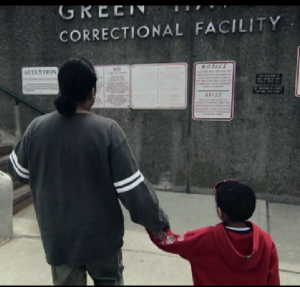“While we reform at a frenzied pace, we have rarely dug deeply enough into the underlying system of districts, schools, and teachers to start reshaping the educational landscape.”[1]—Frederick M. Hess
Education scholar Frederick M. Hess is the director of the Educational Policy at the American Enterprise Institute for Public Policy Research, which is an American think tank. The quote above addresses his criticism of American education reform. According to Hess, while “new” education legislation is constantly created, none of them are powerful enough to disrupt the status quo and change the current education system. Hess argues rather that these education remedies only tweak former ones or claim to instate a new reform, while actually never introducing a new system. Is Fred Hess right? Are we just doing the same thing over and over again?
Through the analysis and comparison of President George W. Bush’s “No Child Left Behind” bill and President Barack Obama’s “Race to the Top” grant program, it is apparent that Fred Hess is more accurate than America and education reformers may want to believe. Overall, the lawmakers and education advocators of No Child Left Behind and the lawmakers and education advocators of Race to the Top agree in what public schools need in order to improve and be successful. Whereas the wording and minutia may be different between No Child Left Behind and Race to the Top, the larger emphasis remains the same. Fred Hess is accurate that reformers have a tendency to get stuck on certain reform styles, such as accountability. Education reformers definitely also have a fear to completely dissociate from previous reforms in order to introduce something completely new and different. However, Hess does not give education reformers enough credit. While No Child Left Behind and Race to the Top are eerily similar in the sense of what reform styles they advocate for, analysis of congressional records display their attempts to amend the previous failures of Congress and the federal government when it comes to education reform.
President Bush argued during the debate of No Child Left Behind and education reform that, “public schools are America’s great hope, and making them work for every child is our Nation’s great duty.”[2] As a result in 2001, the legislation bill H.R. 1 No Child Left Behind was passed by Congress. The main idea behind NCLB was solutions based on accountability, choice and flexibility in federal education programs. Furthermore, NCLB reauthorizes the Elementary and Secondary Education Act of 1965. The goals of No Child Left Behind are to close the achievement gap, create equal opportunity for every child, achieve proficiency in reading, and to improve low-performing schools.[3]
Increasing accountability for states, school districts, and schools is a major part of No Child Left Behind. NCLB required states to implement statewide accountability systems, mainly assessments, for all public schools and students. Congressman Cass Ballenger comments, “the bill takes a two-track approach, expanding flexibility for States and local school districts while holding them strictly accountable for increasing student achievement.”[4] With the data from these assessments, schools will be ranked. Schools that fail to meet the Adequate Yearly Progress (AYP) received punishments. On the other side of the spectrum, schools that met or exceeded the AYP became eligible for State Academic Achievement Awards. In exchange for this increase in accountability, states received more flexibility in the use of federal education dollars.[5]
No Child Left Behind presented parents and students with greater accessibility and options for school choice. The fear that children would remain stuck attending low-performing public schools motivated this part of NCLB. Congressman Boehner comments again on the significance of school choice, “the bill also includes a school choice ‘safety valve’ for students trapped in chronically failing schools that fail to improve after three consecutive years of emergency aid.”[6] However, through a choice program, children would be able to attend a successful public school, which may include a charter school in the district. As a result, NCLB required state districts to provide transportation for these children attending non-district public schools such as public charter schools or magnet schools. It also required the use of Title I funds to obtain supplemental educational services from the public or private sector.[7]
With the implementation of No Child Left Behind, President Bush called for every student to be proficient in reading by the year of 2014. This statement is reflective of the stronger emphasis placed on reading in NCLB. A program, Reading First Initiative, helped increase federal investment in scientifically based reading instruction programs in the early grades. Other program changes within “No Child Left Behind” include class size reduction, English language support, and improving teacher quality. [8] With the change in presidency from President Bush to President Obama, a new education reform was established.
In 2010, after the passing of the Race to the Top program, President Obama claims, “we have an obligation to lift up every child in every school in this country, especially those who are starting out furthest behind.”[9] In 2009, with the help of Secretary of Education Arne Duncan, President Obama passed the education incentive grant program Race to the Top. RTTT is designed to spur systematic reform and embrace innovative approaches to teaching and learning. Race to the Top calls for education reforms such as accountability, standards, improving teacher quality, charter schools, along with other reform styles. The goals of RTTT are to close the achievement gap, improve student achievement for all children, cultivate a society ready for college and the workforce, and improve low-performing schools.
A significant aspect of Race to the Top is the promotion of design and implementation of rigorous standards and quality assessments that are properly aligned with the standards. Greg Jones, Chairman of California Business for Education Excellence, participated in the Committee on Education and labor debate on April 29, 2009, reaffirming other congressmen opinions;
“First, it is not enough to have excellent standards. They have to be aligned test, meaningful accountability and high-quality instruction, as well. Second, holding all students to the same expectations, and reporting results publicly revealed disturbing achievement gaps based on race and economic levels. And, third, we have data that demonstrates irrefutably that these achievement gaps can be closed without lowering standards or expectations to meet them.”[10]
Race to the Top calls for a system of common academic standards created by the states, as well as the improvement of assessments to match these new standards. The idea behind these assessments is that the states will have more data to help them inform decisions and improve instruction. Additionally, RTTT calls to create a statewide longitudinal data system and to make results more accessible.
Attracting great teachers and more importantly, keeping great teachers is an essential emphasis of Obama’s Race to the Top education program. In order to achieve this goal, RTTT calls to expand effective teacher support and to reform and improve teacher prep programs. U.S. Representative Susan Davis comments on the grant program in relation to teachers, “Grants would provide support for rewarding teachers for improving student academic achievement, encouraging highly qualified, effective teachers to enter classrooms with high concentrations of poor children, and developing and implementing performance-based teacher compensation systems.”[11] Also, RTTT signals for the revision of teacher evaluation, compensation and retention policies in order to ensure that good teachers remain in the system and poor teachers do not. Lastly, it encourages the placing of the best teachers in the lowest-performing schools.
Race to the Top hopes to demonstrate and sustain education reform throughout the years. In order to achieve this end result, it encourages expanding support for high-performing public charters, increasing the focus on science and math education, and promoting the collaboration between business leaders, educators, and other stakeholders to raise student achievement. U.S. Representative Rush D. Holt Jr. comments on the emphasis placed on math and science education, “states that include in their Race to the Top application a high-quality plan to emphasize science, technology, engineering and mathematics (STEM) education will receive a competitive preference.”[12] Additionally, U.S. Representative Jared Polis comments on the importance of charter schools in RTTT, “replication and expansion of high-quality charter schools will play a central role in the Administration’s education reform agenda. The charter school program has provided over $2.2 billion in financial assistance to States since 1995 for the planning, program design, and initial implementation of charter schools, and the dissemination of information on charter schools.”[13] While Race to the Top calls for accountability, standards, and teacher improvement, it also calls for these other reforms.
Despite the continuous attempts to amend the American public school system, Fred Hess is accurate in the sense that federal education reformers are calling for “the same thing over and over again.”[14] Regardless of the fact that President Obama states in 2010 while defending his Race to the Top program, “‘we get comfortable with the status quo even when the status quo isn’t good. When you try to shake things up, sometimes people aren’t happy.’”[15] While the actual wording of the legislation may differ, both No Child Left Behind and Race to the Top apply the same reform styles to the education system, thereby not actually breaking the status quo. Both call for closing the achievement gap, accountability, standards, school choice, and improving teacher quality.
Although both of these legislations are calling for essentially the same thing, they differ slightly in the fine print. For example, No Child Left Behind focuses on reading, while Race to the Top places a greater emphasis on math and science education. Whereas, NCLB desires to have every child proficient in reading 2014, RTTT wants to increase the high school graduation rate and send more children to higher education facilities, such as college.
In some respects, Race to the Top is an amended version of No Child Left Behind. The analysis of congressional debates and records reveals that congressman and education reformers agree with what No Child Left Behind attempted to accomplish. In a Congressional meeting, U.S. Representative Michael Castle of Delaware asked Secretary Duncan, “In No Child Left Behind, we adopted having standards and assessments…You have also used that expression. I want to make sure I understand what we are talking about?”[16] Secretary Duncan responds, “And what I think NCLB got fundamentally wrong is they were very, very loose on the goals. So you have 50 states, 50 different goal posts, all over the map. And you are exactly right. Due to the political pressure, the vast majority of those standards got dummied down.”[17]
However, these debates and records also reveal the belief that the implementation of No Child Left Behind failed to achieve its goal. As a result, Congress and the Secretary of Education Arne Duncan modified the application of the reforms of No Child Left Behind such as calling for assessments to match the standards of the state. Hon. Vernon J. Ehlers, a Representative in Congress from the State of Michigan states, “I look forward to working with President Obama, Secretary Duncan, and the Members of this Committee on reforming the No Child Left Behind Act…We must update this law with improvements.”[18] In addition to hoping to rectify flaws from No Child Left Behind, Race to the Top also added more reforms to complete their incentive grant program. For example, Race to the Top places emphasis on data systems as way to help improve instruction.
No Child Left Behind and Race to the Top are both examples of federal education reform. Federal education reform has historically always been a controversial topic. First off, it is extremely challenging for everyone to agree on what remedy should be applied to the schools in order to improve them. Moreover, the federal government has its limits within the realm of public education. In fact, journalist Bill Swindell states, “education has historically been mostly a state and local matter. The federal government’s involvement began with the 1965 Elementary and Secondary Education Act (PL 89-10), which provided aid to students in poor school districts.”[19] No Child Left Behind received criticism when it not only reauthorized the Elementary and Secondary Education Act but also introduced new sanctions. Seemingly, in response to this criticism, Secretary of Education Arne Duncan made a conscious decision to dial back the federal government’s involvement by incorporating federal education reform through an incentive grant program while also encouraging state governments to improve their public schools.
As a consequence of criticism from No Child Left Behind, the main difference between these two pieces of education reform legislation is their form. Patrick McGuinn comments on this difference. He states, “NCLB forced states to change many of their educational practices, but political resistance and capacity gaps at the state level meant that these changes were often more superficial than substantive.”[20] While on the other hand, “RTTT’s design—and specifically its use of a competitive grant process—was intended to avoid these problems by relying on incentives instead of sanctions to drive state reform.”[21] However, even with these differing styles of legislation, the application of these reforms is similar. In both instances if a school district does not follow the requested improvements then it will not receive federal funding.
If Race to the Top is not that different from No Child Left Behind, then how does education reform move forward? In order to move forward it is necessary to better understand the flaws with the current education reform. Fred Hess argues in an Education Next article “Taking Stock of a Decade of Reform” that there are three consistent problems with education reformers and their policies: “Problem One: Measures that are overly ambitious or poorly designed risk undermining popular support for sound and necessary reforms…Problem Two: Overpromising… Problem Three: Obsession with ‘gap closing.’”[22] In other words, these education programs prevent “problem solving and policy tinkering,”[23] in order to improve not only the policy but also more importantly the schools. These reforms make it difficult to adapt the reforms to make sure that these reforms work when applied. Hess argues that with overpromising, education supporters are acting impatiently and as a result are “stifling creativity.”[24] Furthermore, Hess states, “for the past decade, school reform has been primarily about ‘closing achievement gaps’ by boosting math and reading proficiency and graduation rates, among black, Latino, and poor students.”[25] Both No Child Left Behind and Race to the Top embody all of these “problems”.
So where do education reformers go from here? According to Fred Hess, “building on the best of what remains of their architecture—and sweeping the rest out of the way—will take time and patience. But that’s what’s called for.”[26] In other words, education reformers need to stop trying to find the silver bullet and take a step back. Education advocators need to reflect on past reform and acknowledge what works and what does not. Collaboration with teachers and administrators in the school in order to discuss what actually works when implemented is necessary. Education reformers need to be patient and understand that education reform is not possible in one program. Rather, it is accomplished through a series of revisions and constant trial and error. In this essence, Race to the Top may be on the right track for federal education reform by looking at its mistakes in No Child Left Behind and attempting to improve the implementation of the reforms. However, Hess is right in the sense that Race to the Top still focuses on the same reform styles, just different methods.
[1] Frederick M. Hess, Same Thing Over and Over Again, ix.
[2] Public Papers of the President of the United States, 1020.
[3] Hon. John A. Boehner, Introduction of H.R. 1—the No Child Left Behind Act of 2001, Congressional Record, Extension of Remarks, House of Representatives, One Hundred Seventh Congress, First Session, March 21, 2001, House of Representatives, 107th Cong. Washington: U.S. Government Printing Office, 2001, E437.
[4] House of Representatives, No Child Left Behind Act Rewards Progress, Corrects Failure, One Hundred and Seventh Congress, First Session, May, 16, 2001, 107th Cong. Washington: U.S. Government Printing Office, 2001, H2188.
[5] David Nather, “Student-Testing Drive Marks an Attitude Shift in Congress”, CQ Weekly, June 30, 2001, accessed on April 15, 2013, http://library.cqpress.com/cqweekly/document.php?id=weeklyreport107-000000275608&type=hitlist&num=0.
[6] Introduction of H.R. 1—the No Child Left Behind Act of 2001, E437.
[7] Nather, “Student-testing Drive Marks an Attitude Shift in Congress”, http://library.cqpress.com/cqweekly/document.php?id=weeklyreport107-000000275608&type=hitlist&num=0.
[8] Nather, “Student-testing Drive Marks an Attitude Shift in Congress”, http://library.cqpress.com/cqweekly/document.php?id=weeklyreport107-000000275608&type=hitlist&num=0.
[9] Associated Press, “Obama takes on critics of education plan” NBC News, July 29, 2010, accessed on April 15, 2013, http://www.nbcnews.com/id/38467475/#.UWbIW3AXcml.
[10] House of Representatives, United States Congress. Strengthening America’s Competitiveness Through Common Academic Standards, Hearing Before the Committee on Education and Labor, One Hundred Eleventh Congress, First Session, April 29, 2009. 111th Cong. Washington: U.S. Government Printing Office, 2009, 25-26.
[11] House of Representatives, United States Congress, The Obama Administration’s Education Agenda, Hearing Before the Committee on Education and Labor, One Hundred Eleventh Congress, First Session, May 20, 2009, 111th Cong. Washington: U.S. Government Printing Office, 2009, 96.
[12] The Obama Administration’s Education Agenda, 87.
[13] The Obama Administration’s Education Agenda, 93.
[14] Hess, The Same Thing Over and Over Again, ix.
[15] “Obama takes on critics of education plan”, http://www.nbcnews.com/id/38467475/#.UWbIW3AXcml.
[16] The Obama Administration’s Education Agenda, 30.
[17] The Obama Administration’s Education Agenda, 30-31.
[18] The Obama Administration’s Education Agenda, 52.
[19] Bill Swindell, “States Give Low Marks to Education Law,” CQ Weekly, April 10, 2004, accessed on April 15, 2013, http://library.cqpress.com/cqweekly/document.php?id=weeklyreport108-000001101370&type=hitlist&num=0.
[20] Patrick McQuinn, “Stimulating Reform: Race to the Top, Competitive Grants and the Obama Education Agenda”, Educational Policy (November 28, 2011): 138.
[21] McQuinn, “Stimulating Reform: Race to the Top, Competitive Grants and the Obama Education Agenda”138.
[22] Fred Hess, “Taking Stock of a Decade of Reform,” Education Next, Spring 2001: 61-65.
[23] Hess, “Taking Stock of a Decade of Reform,” 63.
[24] Hess, “Taking Stock of a Decade of Reform,” 63.
[25] Hess, “Taking Stock of a Decade of Reform,” 65.
[26] Hess, “Taking Stock of a Decade of Reform,” 65.







